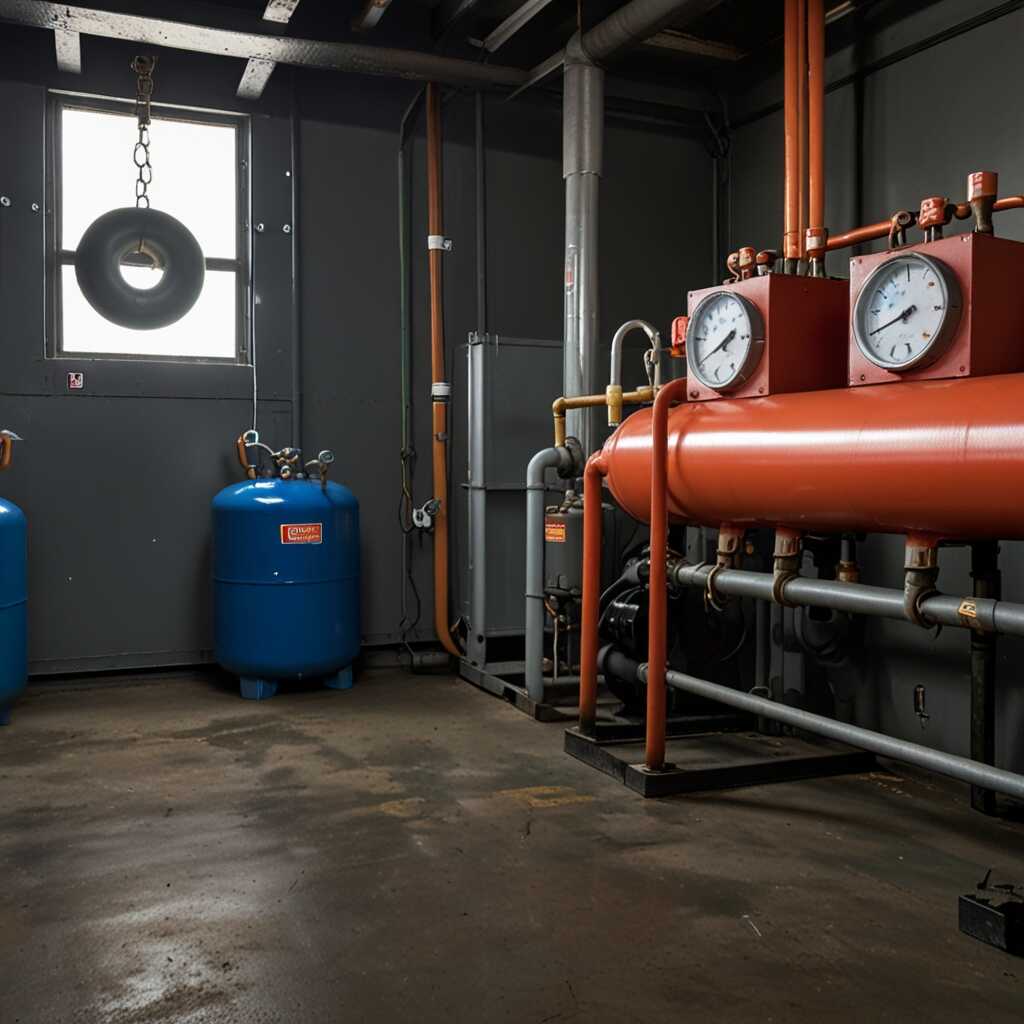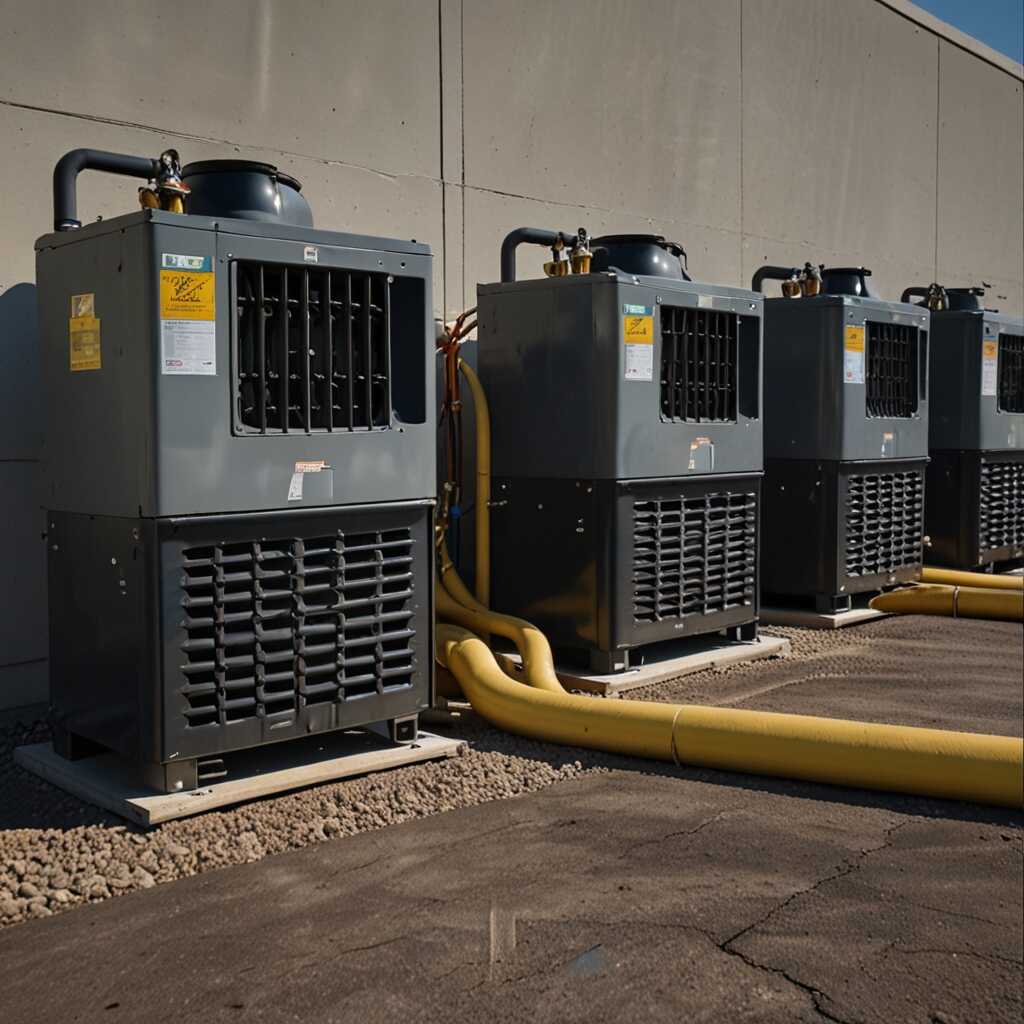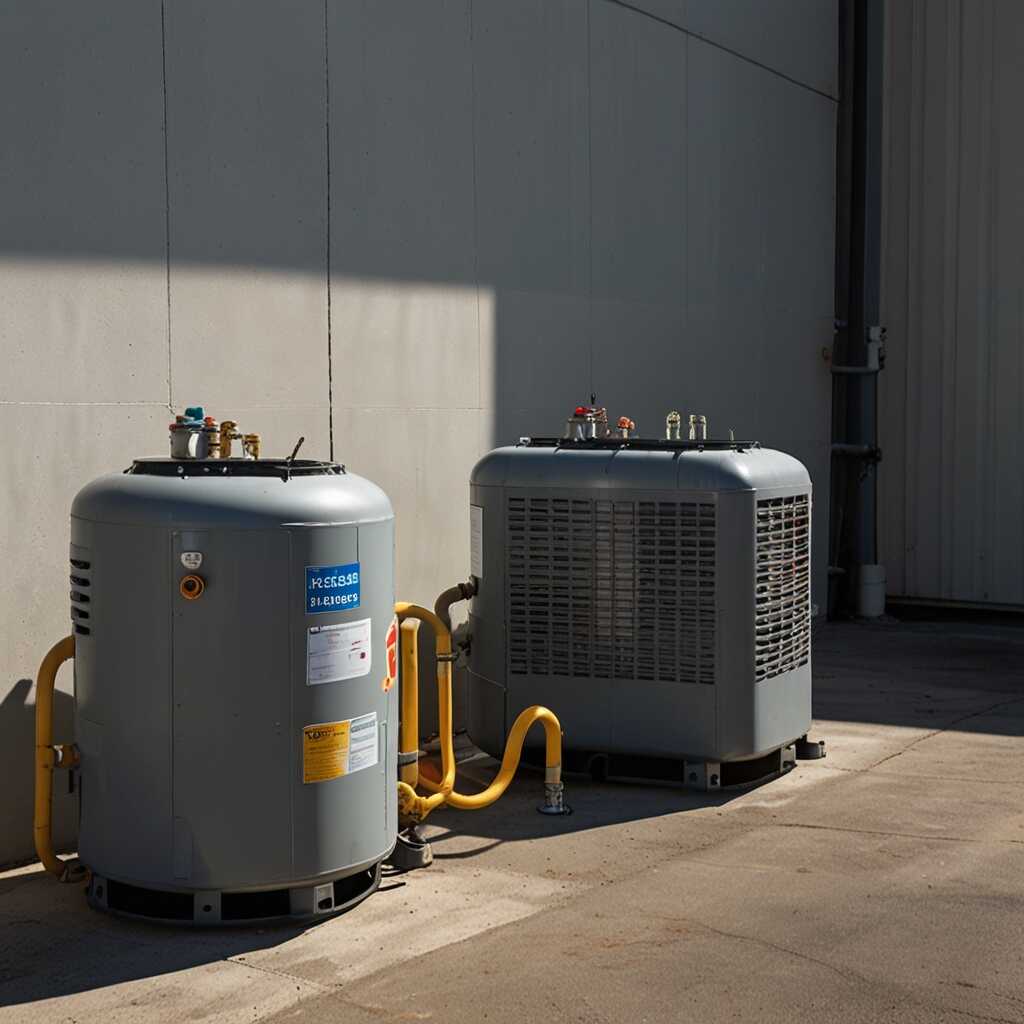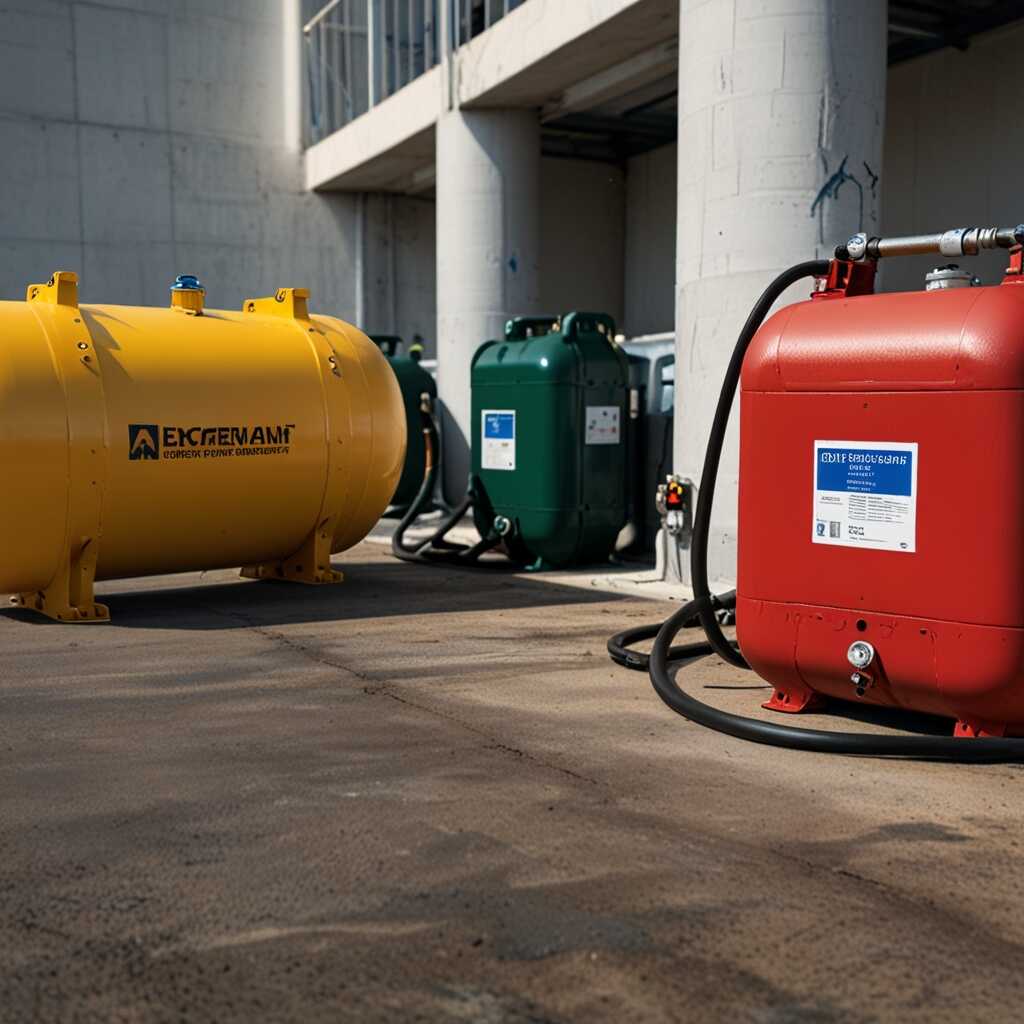Understanding how refrigerant recovery machines work in all climates is essential for HVAC professionals. These machines are designed to efficiently recover refrigerants under various temperature conditions. Refrigerant Recovery Pro offers insights into how these systems operate, ensuring compliance with regulations and promoting best practices. With decades of industry experience, our goal is to provide technical guidance that helps you navigate the complexities of refrigerant recovery.
Introduction to Refrigerant Recovery Machines and Their Functionality
Refrigerant recovery machines are devices used to extract refrigerants from HVAC systems. They play essential roles in maintenance, repair, and decommissioning of these systems. These machines ensure compliance with environmental regulations and proper refrigerant management. A standard high-performing refrigerant recovery machine can achieve an average recovery rate of about 2 to 3 pounds per minute. Their efficiency is vital for saving time and resources during operations.
Key Features of Refrigerant Recovery Machines
The key features of refrigerant recovery machines include high-efficiency compressors, durable construction, and user-friendly controls. These machines are designed to enhance performance across diverse climates. They can handle a wide range of temperatures for effective refrigerant recovery. High-capacity models offer adjustable recovery speeds, ensuring they meet the demands of various jobs. Reliable performance and excellent recovery rates provide HVAC professionals with the tools they need for effective refrigerant management.
The Importance of Wide Temperature Ranges for Functional Efficiency
Wide temperature ranges significantly enhance the operational efficiency of refrigerant recovery machines. These machines are engineered to perform reliably in diverse climatic conditions. They can efficiently recover refrigerants from systems operating in extreme temperatures, whether very hot or very cold. This adaptability is critical for HVAC professionals who work in varying environments. Typically, refrigerant recovery machines can handle temperature ranges from -10°F to 130°F. This range ensures that they remain functional and effective, regardless of external conditions.
How Wide Temperature Ranges Affect Performance During Operations
Understanding how wide temperature ranges affect performance is essential for HVAC professionals. These machines are designed to remain operational in various conditions, enhancing the reliability of refrigerant recovery. When temperatures drop, the compressor’s efficiency can decrease, impacting recovery speed. Conversely, high temperatures can risk overheating. Refrigerant recovery machines with advanced designs incorporate features that maintain performance across these ranges. For instance, models can include specialized cooling systems that help mitigate the effects of heat, ensuring continuous operation. By choosing the right machine, HVAC technicians guarantee efficient refrigerant recovery in all climates, leading to successful outcomes in their operations.

How Climate Variations Influence Refrigerant Recovery Processes
Climate variation significantly affects refrigerant recovery efficiency in HVAC systems. Technicians encounter issues like increased pressure drops and reduced vaporization rates in extreme temperatures. In cold climates, refrigerants can thicken, making recovery slow and inefficient. Conversely, in high-heat conditions, recovery machines must work harder to extract refrigerant, impacting recovery time and reliability. The optimum temperature range for refrigerant recovery machines is typically between 60°F and 100°F. Machines operating outside this range often struggle, leading to poor performance and increased wear. The challenges faced in these conditions highlight the need for experienced technicians who can provide effective solutions.
Key Factors Impacting Refrigerant Recovery in Extreme Climates
Several key factors impact refrigerant recovery in extreme climates. In extremely cold environments, technicians may find that refrigerants become viscous, and machines struggle to recover liquid refrigerant quickly. This can lead to decreased efficiency and prolonged recovery times. In hot climates, machines experience increased pressure, which can exceed design limits of some equipment. Ensuring that recovery equipment is designed for the specific climate is essential. Technicians should have reliable, durable machinery that can handle these extremes. Regular performance reviews and testing enhance the ability to recover refrigerants effectively. Understanding these factors allows HVAC professionals to select the best equipment for efficiency and reliability in any climate.
Key Numeric Facts About Refrigerant Recovery Machines
- Many recovery machines can operate in temperatures ranging from 0°F to 130°F.
- Over 90% of HVAC technicians report using refrigerant recovery machines for compliance.
- Recovery machines can recover 95% of refrigerants during operation.
- Studies show that effective recovery lowers the risk of refrigerant leaks by 80%.
- Machines typically have a recovery rate of 0.25 to 2.0 pounds per minute.
- Some machines can handle refrigerants with high global warming potential (GWP) effectively.
- Even in extreme conditions, proper usage leads to a safe recovery process with minimal waste.

Guidelines for Operating Recovery Machines in Extreme Weather Conditions
When operating refrigerant recovery machines in extreme temperatures, consider factors like the machine’s design, refrigerant type, and ambient conditions. Each recovery machine can have varying levels of reliability and performance based on the climate. For example, machines designed to handle higher temperatures may struggle under extreme cold and vice versa. The optimal performance temperature range for most refrigerant recovery machines is between 40°F to 120°F. Operating outside these ranges can result in inefficiencies and potential equipment damage.
Understanding Climate-Specific Guidelines for Effective Operations
HVAC professionals should be familiar with climate-specific guidelines to enhance the efficiency of refrigerant recovery machines. In extreme heat, ensure the machine has adequate cooling features to prevent overheating. This may involve utilizing coolants or external cooling units. Conversely, in extreme cold, insulating hoses and keeping critical components warm can prevent freezing. Proper testing and regular maintenance checks help ensure durability and performance. Reviews from experienced HVAC professionals indicate that following these guidelines significantly improves machines’ ability to recover refrigerant effectively, even in harsh conditions.

Common Challenges with Refrigerant Recovery Across Different Climates
Technicians face several challenges when working with refrigerant recovery machines in various climates. Extreme temperatures can affect the operational efficiency and reliability of the equipment. Cold temperatures may result in slow recovery rates, while high temperatures can lead to increased pressure, causing performance issues. Humidity levels also play a crucial role. High humidity can lead to moisture entering the system, which impacts the refrigerant’s quality. Effective troubleshooting techniques include frequent testing of the equipment and monitoring its performance during operation. Regular maintenance practices are essential to ensure the machines remain durable and function correctly in different environmental conditions.
Impact of Temperature Variations on Recovery Machines
Temperature variations directly impact the recovery rates and efficiency of refrigerant recovery machines. In low temperatures, the refrigerant may not evaporate as efficiently, causing prolonged recovery times. In contrast, high temperatures can cause excessive pressure, risking equipment failure. Ensuring your refrigerant recovery equipment is equipped with features designed for wide temperature ranges can improve performance. Regular maintenance checks, including inspecting hoses and seals, enhance reliability in all climatic conditions. By understanding how operational efficiency is affected by temperature, technicians can make informed decisions and adjustments to optimize recovery processes.
Advantages of Efficient Refrigerant Recovery in Various Settings
- Effective recovery improves environmental sustainability by recycling refrigerants.
- Reliable machines help HVAC professionals maintain compliance with EPA regulations.
- Using high-quality recovery machines reduces refrigerant loss drastically.
- Machines enhance performance under diverse weather conditions, maximizing efficiency.
- Technicians can save money by reusing recovered refrigerants for future projects.
- Efficient recovery extends the lifespan of HVAC systems by ensuring optimal performance.
- Using advanced recovery technology empowers technicians with better tools and practices.

Innovations in Refrigerant Recovery Technology for Climate Adaptability
Recent advancements in refrigerant recovery technology enable machines to operate efficiently across various climates. Innovations include enhanced temperature adaptability, improved testing for reliability, and better materials for durability. These advancements help HVAC professionals enhance service quality and reliability, ensuring effective recovery in both extreme heat and cold. Modern refrigerant recovery machines can effectively handle temperatures ranging from -40°F to 125°F. This wide operating range minimizes downtime and maximizes performance, allowing technicians to tackle diverse job sites with confidence.
Key Features of Modern Refrigerant Recovery Machines
Modern refrigerant recovery machines come equipped with several key features that significantly improve their effectiveness. The integration of advanced compressors and high-efficiency pumps enhances refrigerant flow rates, ensuring rapid recovery times. Many units boast built-in diagnostic capabilities that provide real-time data, helping HVAC professionals identify issues quickly. Features like lightweight yet durable construction make these machines easy to transport while maintaining high quality. As a result, technicians can perform their tasks efficiently, regardless of climate conditions, ultimately delivering better service outcomes.
Understanding Regulatory Compliance in Refrigerant Recovery
HVAC professionals must be aware of several key regulatory compliance issues related to refrigerant recovery practices. Regulatory compliance standards are established to protect the environment by managing refrigerants safely. Familiarity with EPA regulations, as well as state and local laws, ensures HVAC technicians adhere to legal requirements. Regulations address proper refrigerant handling, leakage testing, and recovery equipment standards. Understanding the implications of these rules on work practices enhances environmental responsibility.
Important Regulatory Bodies Affecting Refrigerant Recovery
Many entities influence refrigerant recovery practices, prominently including the EPA and local environmental agencies. The EPA establishes essential guidelines that HVAC professionals must follow. These guidelines dictate recovery methods and equipment effectiveness, ensuring compliance with national standards. Local authorities often implement stricter rules based on unique environmental conditions. HVAC professionals should stay informed on how regulations evolve, as this knowledge helps maintain compliance and support efforts to prevent refrigerant emissions.
Brands and Their Use Cases for Refrigerant Recovery Equipment
- Brand A offers robust machines ideal for extreme outdoor conditions, favored by outdoor technicians.
- Brand B is known for its compact units, perfect for residential HVAC tasks in small spaces.
- Brand C provides versatile recovery machines suitable for both commercial and residential applications.
- Brand D specializes in high-capacity machines, preferred by industrial sectors requiring fast recovery.
- Brand E focuses on eco-friendly models for technicians aiming for sustainable operations.
- Brands targeting the education market equip students with essential skills for future HVAC work.
- Many new technicians prefer compact brands as they are easy to transport to job sites.
Future Developments in Refrigerant Recovery Practices and Technologies
Emerging trends in refrigerant recovery include improvements designed to increase operational efficiency across varying climates. Companies like Honeywell and Daikin are leading in these advancements by developing innovative refrigerant recovery technologies that focus on reliability and performance. The industry anticipates significant advancements by 2025, driven by stricter regulations and a push for more sustainable practices. These changes are essential for HVAC professionals to ensure compliance while enhancing recovery methods.
Adapting Recovery Equipment for Diverse Climates
Adapting refrigerant recovery equipment for diverse climates is crucial for optimizing performance. New models feature advanced sensors that monitor temperature changes and adjust recovery rates accordingly. These innovations enhance operational efficiency by enabling machines to function effectively in extreme heat or cold. For example, some recovery machines are now designed with winterization features and summer-mode settings. This helps HVAC technicians provide reliable and efficient service across different environments, ensuring they meet regulatory standards.